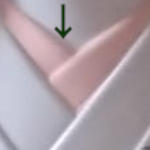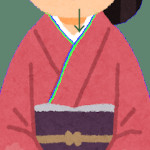Eri (collar)
Eri (collar) of a kimono plays a crucial role in shaping the overall impression and completeness of the outfit. The eri’s (collar)shape, height, and decoration significantly influence the style and ambiance of the kimono. Moreover, adjusting the collar’s position and angle allows for fine-tuning the balance and beauty of the wearer’s appearance. Additionally, the eri’s (collar’s) decoration and material are often chosen to complement the kimono’s design and season, enhancing its individuality and charm. Therefore, the selection and dressing techniques of the eri(collar) are essential in bringing out the allure of the kimono.Here is the translation of the information about types and usage of kimono collars:
There are several types of collars for kimono. Some of the main are as follows:
1.Awaseeri (袷襟) This collar is matched with the kimono, particularly those with linings (awase). It is often worn together with the kimono’s hem and sleeves.
2.Haneri (半襟)**: A small collar worn directly on the kimono collar, typically used in summer or with thinner fabrics. Haneri is easy to wash and can serve as a decorative element for the collar.
3. Nagaeri (長襟): A longer collar typically worn on formal occasions such as ceremonies and weddings. Nagaeri adds elegance to the neckline of the kimono.
4. Mijikaeri (短襟): A shorter collar commonly used in casual situations or with kimono styles popular among younger generations. Mijikaeri allows for more versatile styling and can serve as a fashionable accent.

